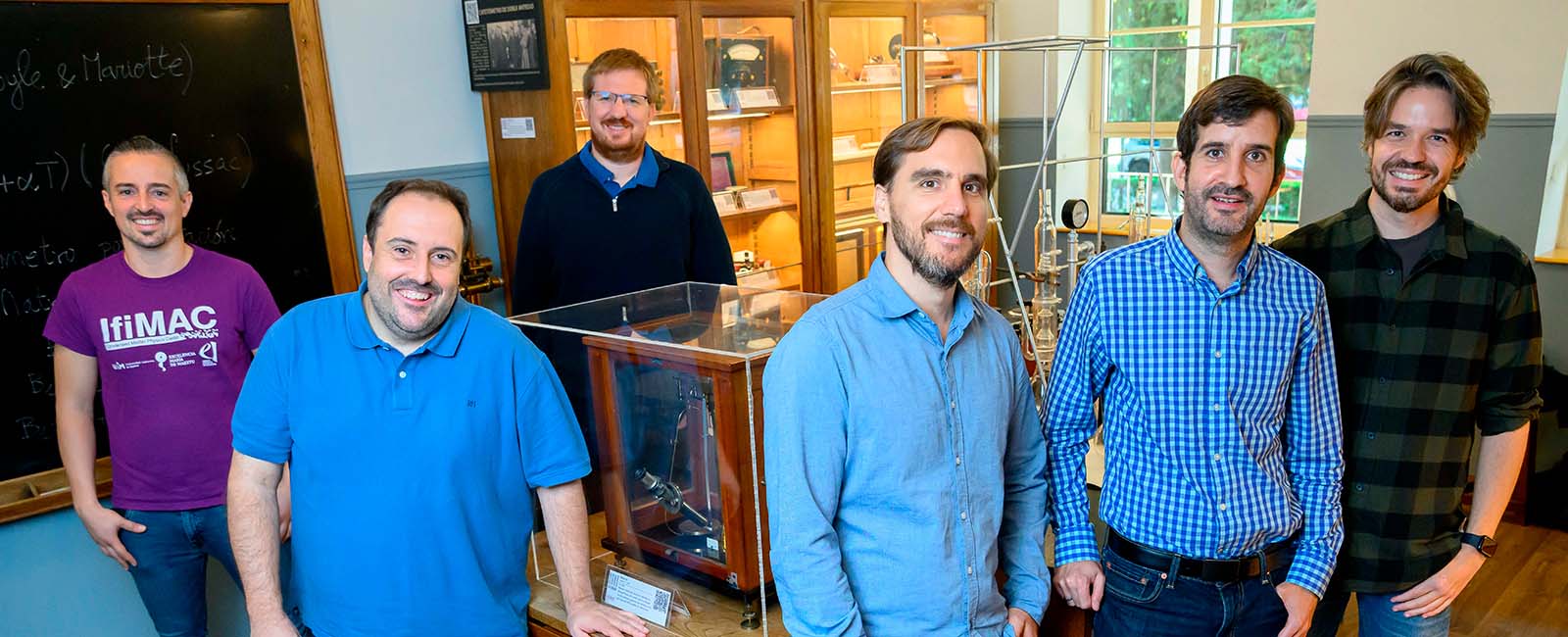RESEARCH TEAM
Principal investigators: Antonio Isaac Fernández Domínguez (Universidad Autónoma de Madrid) and Alejandro González Tudela (Instituto de Física Fundamental, CSIC).
Team members: Johannes Feist (Universidad Autónoma de Madrid); Daniel González Cuadra (Instituto de Física Teórica, CSIC); Diego Martín Cano (Universidad Autónoma de Madrid); Alejandro Manjavacas Arévalo (Instituto de Física y Química, CSIC); Carlos Sánchez Muñoz (Instituto de Física Fundamental, CSIC); and Peter Zoller (University of Innsbruck, Austria).
DESCRIPTION
This project aims to lay the theoretical foundations for the next step in two key aspects of quantum technologies: ultra-precise measurements and the simulation of physical and chemical systems that have so far proved difficult to model and, therefore, understand in detail.
For around two decades now, it has been possible to control the behavior of light with great precision, at the nanometric scale. But in the last few years this control has been refined to the point where we can observe and manipulate the quantum properties of light in order to measure or even exploit quantum effects in matter. “We want to see if we can use new systems of quantum nanophotonics to overcome some of the limitations of today’s quantum technologies,” says Alejandro González Tudela, a scientific researcher at the Instituto de Física Fundamental (CSIC) and a PI on the project, which also numbers among its members Peter Zoller, Emeritus Professor of Theoretical Physics at the University of Innsbruck (Austria) and joint winner of the 2009 Frontiers of Knowledge Award in Basic Sciences.
The project, co-led by Antonio Fernández Domínguez (Professor of Condensed Matter Physics at the Universidad Autónoma de Madrid), will explore the potential of nanophotonic systems for two fundamental applications: quantum sensors and quantum simulation. In the first case, quantum properties will open the door to increasingly precise sensors; in the second, the ultimate goal is to build more versatile simulators better able to model matter than conventional computers, enabling more accurate predictions of its behavior.
Despite the wholly theoretical nature of the research, the team hopes the advances made can be experimentally proven in the mid-term future. In the meantime, the goal is to develop the mathematical and computational techniques to describe the target systems, then go on to predict the limits of their behavior. “These predictions will provide guidance to researchers in our field as to the design and direction of future experiments,” concludes González Tudela.

